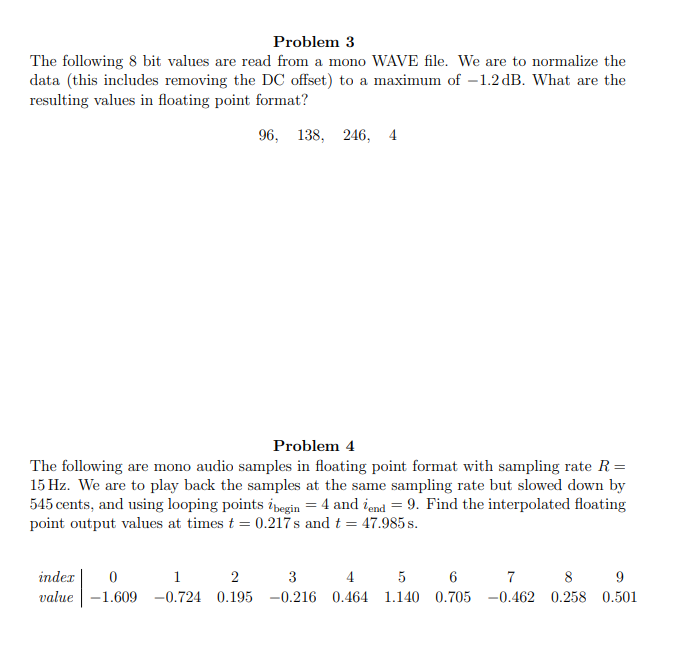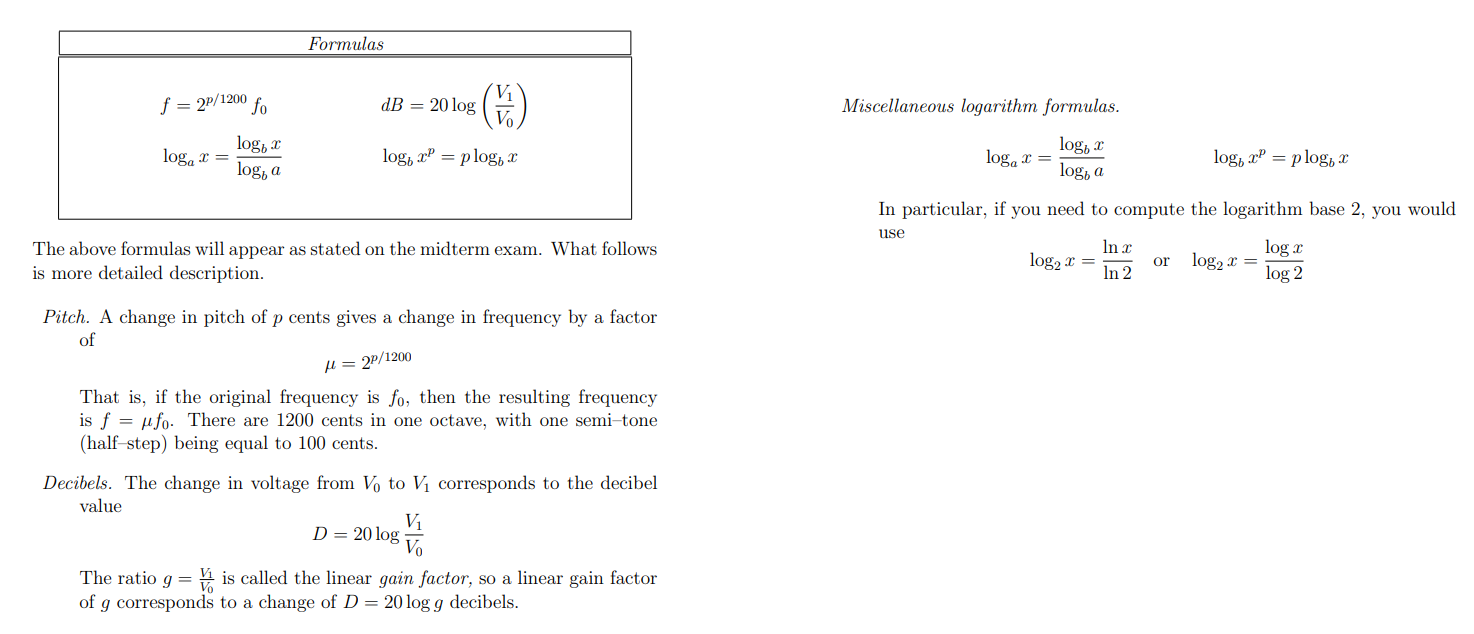

Problem 3 The following 8 bit values are read from a mono WAVE file. We are to normalize the data (this includes removing the DC offset) to a maximum of -1.2 dB. What are the resulting values in floating point format? hofenzee. wohntelaze the 96, 138, 246, 4 Problem 4 The following are mono audio samples in floating point format with sampling rate R= 15 Hz. We are to play back the samples at the same sampling rate but slowed down by 545 cents, and using looping points ibegin = 4 and iend = 9. Find the interpolated floating point output values at times t = 0.217 s and t = 47.985 s. inder value 0 -1.609 1 2 -0.724 0.195 3 -0.216 4 5 6 0.464 1.140 0.705 7 8 9 -0.462 0.258 0.501 Formulas f = 2p/1200 fo dB = 20 log Miscellaneous logarithm formulas. logo2 loga 1 = logo 2 logo XP = plog 2 loga * = log, a logo 2P = p logo2 log, a In particular, if you need to compute the logarithm base 2, you would use log 2 The above formulas will appear as stated on the midterm exam. What follows is more detailed description. Inc log2x = in or log21 = log2 Pitch. A change in pitch of p cents gives a change in frequency by a factor of u= 2P/1200 That is, if the original frequency is fo, then the resulting frequency is f = ufo. There are 1200 cents in one octave, with one semi-tone (half step) being equal to 100 cents. Decibels. The change in voltage from Voto Vi corresponds to the decibel value D= 20 log The ratio g = V is called the linear gain factor, so a linear gain factor of g corresponds to a change of D = 20 log g decibels. Problem 3 The following 8 bit values are read from a mono WAVE file. We are to normalize the data (this includes removing the DC offset) to a maximum of -1.2 dB. What are the resulting values in floating point format? hofenzee. wohntelaze the 96, 138, 246, 4 Problem 4 The following are mono audio samples in floating point format with sampling rate R= 15 Hz. We are to play back the samples at the same sampling rate but slowed down by 545 cents, and using looping points ibegin = 4 and iend = 9. Find the interpolated floating point output values at times t = 0.217 s and t = 47.985 s. inder value 0 -1.609 1 2 -0.724 0.195 3 -0.216 4 5 6 0.464 1.140 0.705 7 8 9 -0.462 0.258 0.501 Formulas f = 2p/1200 fo dB = 20 log Miscellaneous logarithm formulas. logo2 loga 1 = logo 2 logo XP = plog 2 loga * = log, a logo 2P = p logo2 log, a In particular, if you need to compute the logarithm base 2, you would use log 2 The above formulas will appear as stated on the midterm exam. What follows is more detailed description. Inc log2x = in or log21 = log2 Pitch. A change in pitch of p cents gives a change in frequency by a factor of u= 2P/1200 That is, if the original frequency is fo, then the resulting frequency is f = ufo. There are 1200 cents in one octave, with one semi-tone (half step) being equal to 100 cents. Decibels. The change in voltage from Voto Vi corresponds to the decibel value D= 20 log The ratio g = V is called the linear gain factor, so a linear gain factor of g corresponds to a change of D = 20 log g decibels








